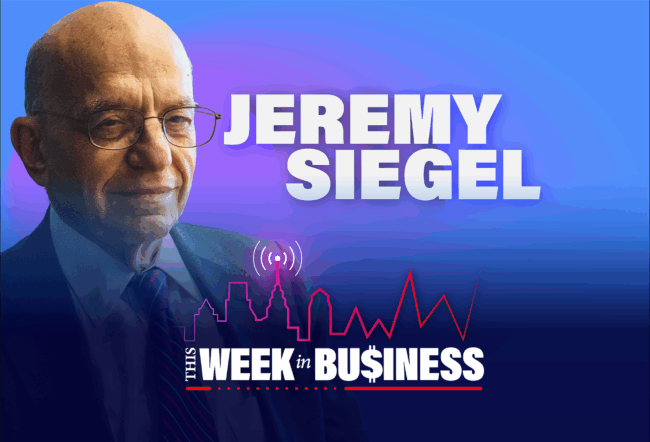Home prices and construction are set for a banner year in 2022, riding on the back of historically low interest rates and strong demand for work-from-home space, according to Susan M. Wachter, Wharton professor of real estate and finance. That could change, however, if prospective home buyers resist higher interest rates and rising home prices beyond a point, she said. The outlook is less rosy for the commercial space markets, with the prevailing low occupancy rates for office and retail space. Especially hurt in pandemic times will be big cities like New York City and San Francisco that depend substantially on their downtown retail economies, she predicted.
Wachter shared her insights on the outlook for 2022 in a recent interview on Wharton Business Daily on SiriusXM. (Listen to the full podcast above.)
Following is an edited transcript of the interview.
Wharton Business Daily: How much of an impact would interest rate increases have on the home-buying and home-selling market this year?
Susan Wachter: That is a critical issue for 2022. I would say it this way: What will the Fed have to do? There’s a great deal of uncertainty about inflation, which is now at a 40-year high of 7%. How fast will it come down? The Fed already is baking in three interest rate increases of 25% each, which will get us back up to 4% mortgage rates. That’s still historically low.
If mortgage rates stay within that 3% to 4% band, I don’t suspect that’s going to cut off a great year for housing and increasing prices — not at the same rate, a deceleration. The big question in front of all of us is: Will the Fed have to do more, and what will that do to the housing market and the overall economy?
Wharton Business Daily: How do you think it will impact home builders, because it seems like there’s a waning level of confidence there? They’re still dealing with the supply chain issues and the pandemic. A lot of the single-family home building is at the high end of the market, especially in the last few years.
“The question is whether we have a buyers’ strike when and if mortgage rates move up beyond 4%, at the same time that housing prices increase at a blistering rate.”
Wachter: Counterintuitively, right now it’s all cylinders go for home builders. They want to get the product out, and [do that] as soon as possible. It’s counterintuitive on the part of homebuyers, too. They see the possibility of interest rates rising, and they want to buy sooner rather than later. So for now, at the range of rates that we’re seeing, I don’t see this putting a crimp in a banner year for housing construction.
The question is whether we have a buyers’ strike when and if mortgage rates move up beyond 4%, at the same time that housing prices increase at a blistering rate. Not at last year’s rate, which was exorbitant, but still double what a normal rate would be. Both of those could mean that finally buyers have to move to the sidelines, which of course would hit builders. Builders right now are passing on their price increases. They’re having a hard time getting product out, but they’re moving it as fast as they can.
Wharton Business Daily: Many millennials are now looking to be first-time homebuyers in a market where rates will go up, and there are supply issues as well. It will be interesting to see what will play out over the next 12 months.
Wachter: Millennials are at their peak home-buying years. Also, it’s cheaper to own in most markets than to rent. But qualifying for a home and getting that down payment — [the median home price is] over $350,000 — is beyond many millennials, even though it would be cheaper to own. That [gap is] increasing. And depending on your job, your wages are not keeping up with inflation. So, we have a lot of discouraged renters who see themselves renting for quite a while, despite the fact they’re in their years when their older brothers and sisters and their parents were buying.
A Race for Space
Wharton Business Daily: During the pandemic, many people who lived in the cities moved to the suburbs for a variety of reasons. Now, it looks like a significant portion of our workforce will continue to work from home. What will that mean for big cities that have invested a lot in building new real estate projects, but also refurbishing older projects?
Wachter: We’re likely to see a bifurcation. The newer projects, the higher-quality projects are likely to do fine, but there’s a real question about B-grade product, particularly office and new retail and whether it’s a death knell. That’s going to depend in part on COVID and the return to the workspace.
There was race for space — a race to get out of the cities — at the beginning of COVID for two reasons. One, just to escape COVID and the concentration of COVID, to get to empty spaces into a home. But there is now, of course, this remote working option, which didn’t exist before. Not everyone is going to take it, but a significant part of the workforce will take it. We will have a permanent shift to hybrid, and that’s going to decrease the demand, but not for Class A space. It’s going to decrease the demand for the older space.
“We’ve got a good year ahead for [housing] construction, for pricing, for sales – everything. But it is all dependent on … what the Fed has to do about inflation.”
It will have consequences for retail and for the vibrancy of downtowns in the big cities. There are big cities that have been very dependent in the past on their downtowns, like New York City and San Francisco. They’re really being hit. The future of COVID will affect this, as well as the future of omicron. In January [2020], we saw office space at 40% occupancy — still terrible — but now it’s down to 28% in these big cities. This is really a problem.
However, with optimism, and with omicron over, we’re likely to come back, but not to the rate of occupancy that we saw before. This is going to be a revolution in office [space], not all for the bad, because it’s for many people more productive to work from anywhere or work from home.
The other side of that is if you’re working from home, playing from home, or perhaps teaching your children from home, then there’s a race for space, which is what’s driving demand for housing. That underlying drive for space and demand for housing isn’t going away this year. So at least until the middle of this year, until we resolve what’s happening with the Fed and interest rates, we’re still in a good market for buying homes and for selling homes, in particular.
Wharton Business Daily: I wonder if we could be headed – maybe not in 2022, but maybe beyond 2023 — toward a little bit of a cooling of the real estate market.
Wachter: Absolutely. “Cooling” is perhaps not the right word. Deceleration is likely in housing prices this year, from over 20% to double digit, but 10% or lower on average.
The question is, what happens at the end of 2022? The real looming threat out there is the possibility of a recession if the Fed cannot contain inflation with its current measures. And if they can’t — as we’ve heard from [Fed Chair] Jerome Powell — they’ll do “anything and everything,” and that could mean a spike in interest rates, which, combined with price rises, could lead to a sell-off in housing prices.
We don’t see that for 2022. We just see a deceleration, but it’s certainly something to keep an eye on.
Wharton Business Daily: Finally, Susan, what are your overall expectations for real estate this year?
Wachter: It’s going to be a banner year for housing production, for single-family homes, and for single-family rentals. It will be a good year for housing prices unless the Fed has to act. So, with that caveat, we’ve got a good year ahead for construction, for pricing, for sales – everything. But, of course, it is all dependent on that critical issue of what the Fed has to do about this unprecedented 7% inflation, a 40-year high.



